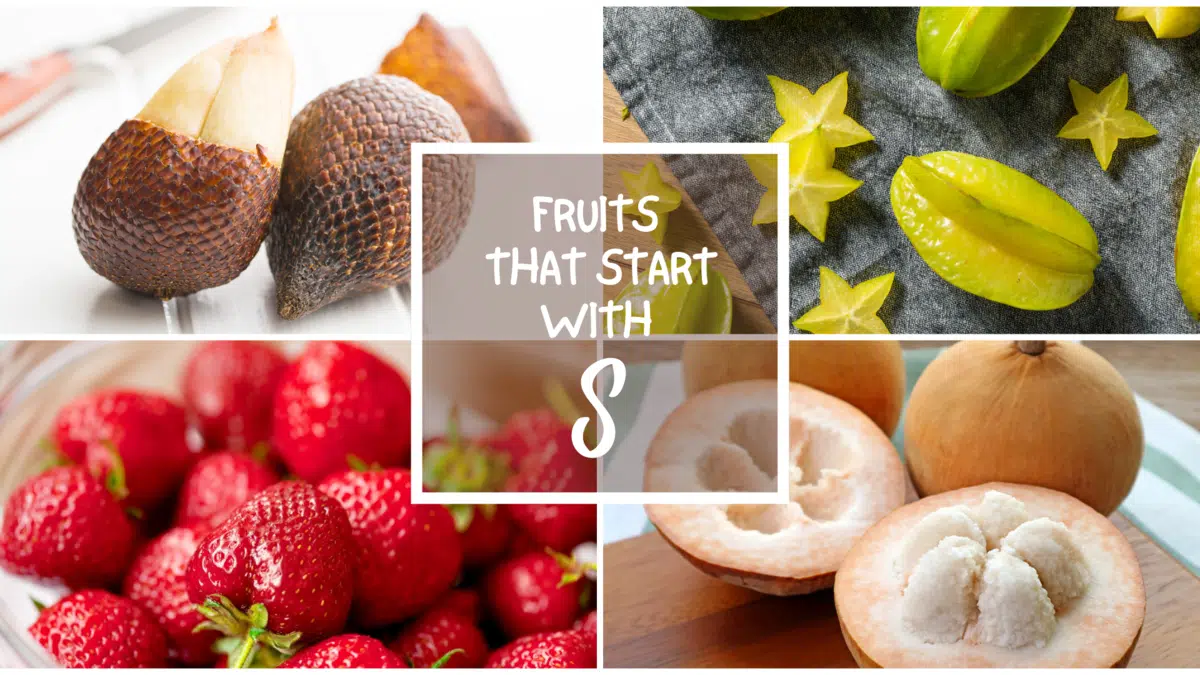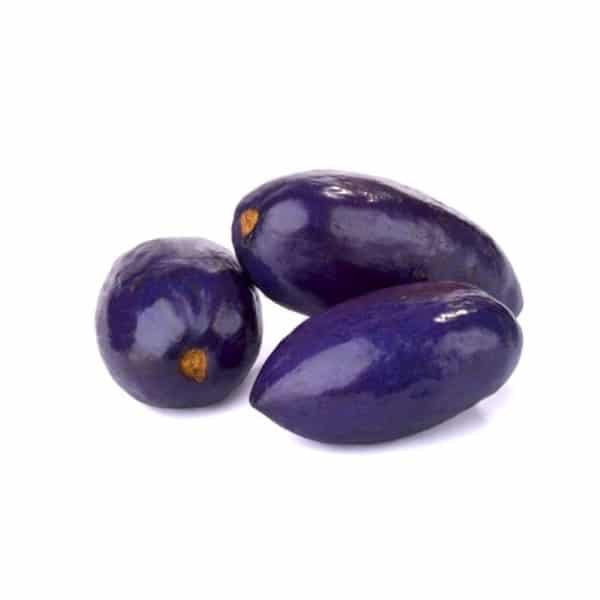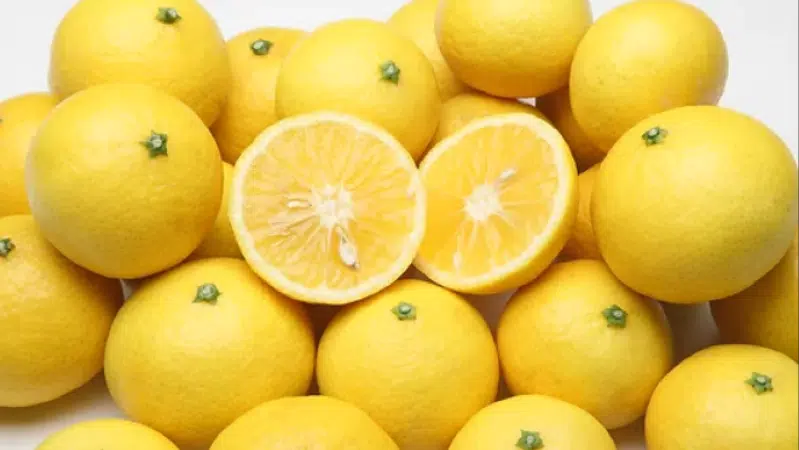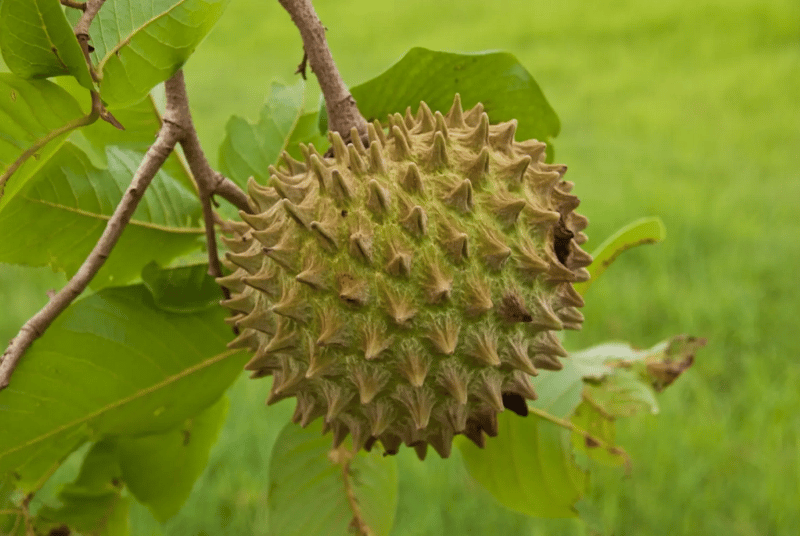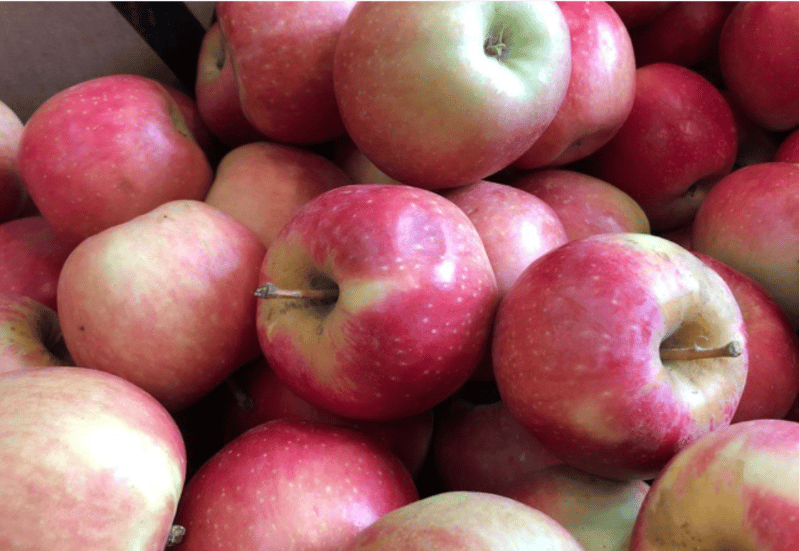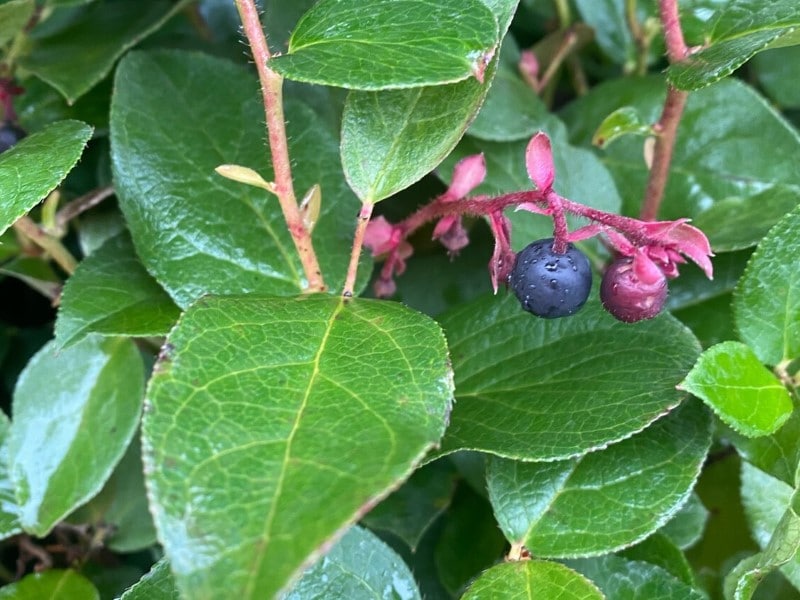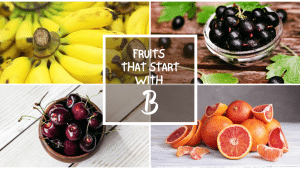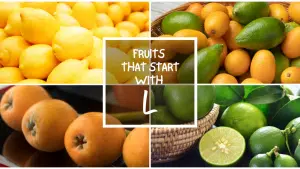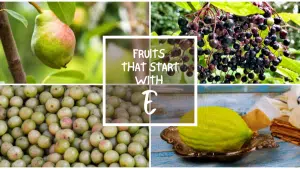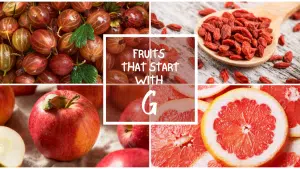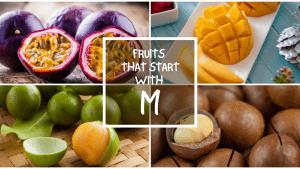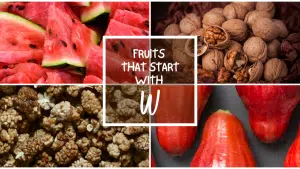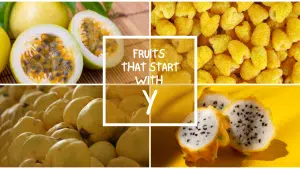All The Fruits That Start With S
Important Note: When you buy through our links, we may earn a commission. As an Amazon Associate we earn from qualifying purchases. Content, pricing, offers and availability are subject to change at any time - more info.
You may be wondering why a list with a single letter? If so, then this is the right article for you. It explores a list of unique fruits, some you already know, while the rest you will get a chance to learn about. There are so many fruits existing on planet earth, and they all serve different purposes ranging from nutritional ones to being ingredients for other recipes. They have various tastes; sweet and juicy, and sour and bitter. As discussed below, some fruits start with the letter S, including Safou, Saigon Mango, salal, salak, and Santol, among many others.
- Safou
- Salak
- Salmonberry
- Santol
- Sapodilla
- Sarvisberry
- Satsuma
- Seagrape
- Seville Orange
- Shonan Gold
- Snap Pea
- Snow Pea
- Soncoya
- Sour Cherry
- Splendor Apple
- Squash Blossoms
- Summer Squash
- Star Apple
- Star Fruit
- Strawberry
- Strawberry Guava
- Salal
- Saigon Mango
- Stinking Bishop Pear
- The Final Letter
Safou
The Safou fruit, whose scientific name is Dacryodes edulis, originates from the West and Central Africa region, where it is vastly grown. It is also called African Plum, African Pear, Butter fruit, and Bush Butter tree. The safou fruit is edible and is best taken when cooked. When cooked, it takes on a creamy texture because its pulp has 48% of oil and is very delicious. It is a narrow, four-sided fruit with a shiny, gentle, and thin crust that is dark blue or violet. The pulp of Safou fruit is a soft light green color with a strong smell of turpentine oil. The flesh is separated from the skin and the seed by boiling the fruit in saltwater. It can also be roasted. The fruit also contains stony seeds, which are also cooked and consumed as food. The wood of the tree that produces the Safou tree is also helpful in producing timber that is good for building.
This fruit contains fat content, amino acids, and nutrients like calcium, potassium, and magnesium, suitable for the body. It also has biochemicals like iodine, oxalates, acid, and phytates.
Salak
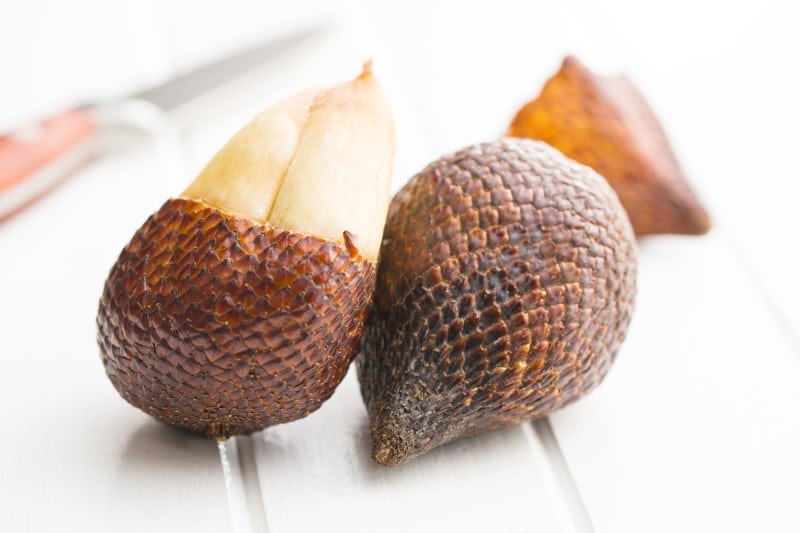
The Salak fruit, whose scientific name is Salacca zalacca originates from Sumatra and Java in Indonesia, where over thirty different kinds of fruit are grown. The fruit is famous for its sharp and sweet flavor. The flesh of this fruit is edible after peeling the skin. When fully ripe, it is dry and crunchy, and its skin has wide gaps as opposed to the little holes when it is young. It can be eaten when raw or used to make juices, candies, and wine.
The Salak fruit has high potassium content that helps with cardiovascular health. They have high antioxidants and minerals that help the cardiovascular system function properly and help with the regulation of water in the body. It also acts as a memory booster.
Salmonberry
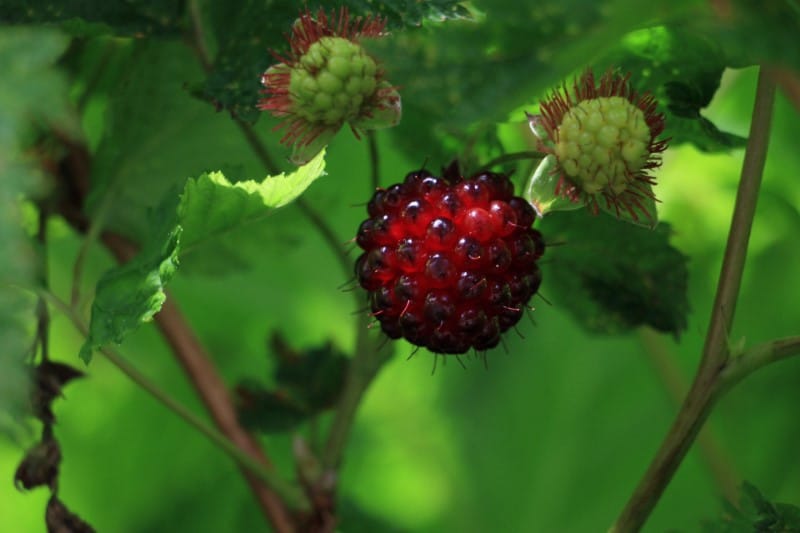
The Salmonberry fruit, whose scientific name is Rubus spectabilis, is native to the west coast of North America, where they are said to thrive well. It is a member of the Rosaceae family and is similar to a raspberry in shape and size. It is yellow, orange, or red and is spread worldwide. Salmonberries have a tart with a slightly sweet taste. They are a delicious delicacy of early spring. Salmonberry can be safely consumed when raw or used in making jams and candies. It can also be used in cooking food like asparagus and added as a flavor to wine and beer. It has medicinal properties where it is used to treat diarrhea and dysentery.
Santol

The scientific name of the Santol fruit is Sandoricum koetjape. They belong to Meliaceae family. Santol fruits are native to the Philippines, where they are commonly grown and eaten. The taste of the fruit ranges from tart to very sweet depending on variety and maturity. The most precious of these fruits have a candy-like taste with slight apple and peach notes. They are either round, oval or flat in shape. The crust is somewhat fuzzy, wrinkled, and leathery, ripening from green to golden yellow and sometimes with a red blush. The thickness of the peel varies from thin and fibrous to thick and spongy. The flesh is translucent white, and it encases inedible seeds. The meat is juicy, soft, and slippery with a cotton-like consistency. Harvesting these fruits is quite a task because they don’t fall off the tree when ready compared to other common fruits. You have to climb the tree and use a stick with split ends to rotate the fruits from their branches and have them fall off. They are usually in season during the late spring. They can be taken alone while raw or sprinkled with spices and salt to make a snack. They can also be soaked in juices or blended into beverages. They can also be cooked into jams, syrups, jellies, or candies. Santol fruits are a good source of iron and fiber, which help move oxygen in the blood and regulate digestion. They also have Vitamin C, Calcium, and Phosphorus.
Sapodilla
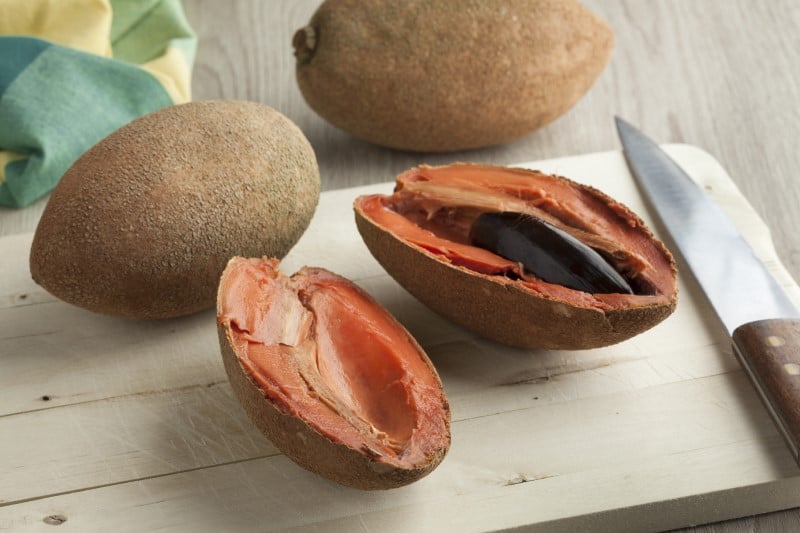
The scientific name of the Sapodilla fruit is Manilkara zapota. It is a commonly loved fruit in some tropical regions and is also called nispero, chico, chikoo, or naseberry. It has a golden brown pulp that resembles the color of a well-baked pastry cake when it’s cut open. The Sapodilla fruits have a delightful taste like the pastry cake, brown sugar, pear, and sweet potato like their color resemblance. They have a pear-like texture with rich molasses taste that is malty. They can be eaten alone while raw or cooked. Sapodilla fruits are an excellent source of fiber essential for heart health, gut health, and maintaining the right body weight.
Sarvisberry
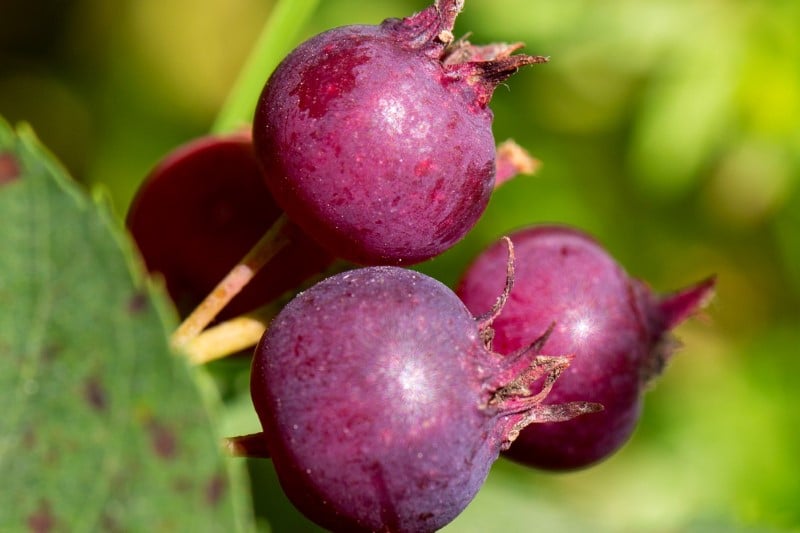
The Serviceberry fruit can be eaten when raw, and it tastes just like a blueberry. They are used for pancakes, fruit salads, compotes, or jams. When ripe, they are softer, darker, and tastier. They have tiny seeds that, when crunched, release a delightful taste. They are also a typical food for most wildlife animals. Sarvisberry fruits have magnesium, manganese, calcium, iron, and potassium, which are essential nutrients for the body.
Satsuma
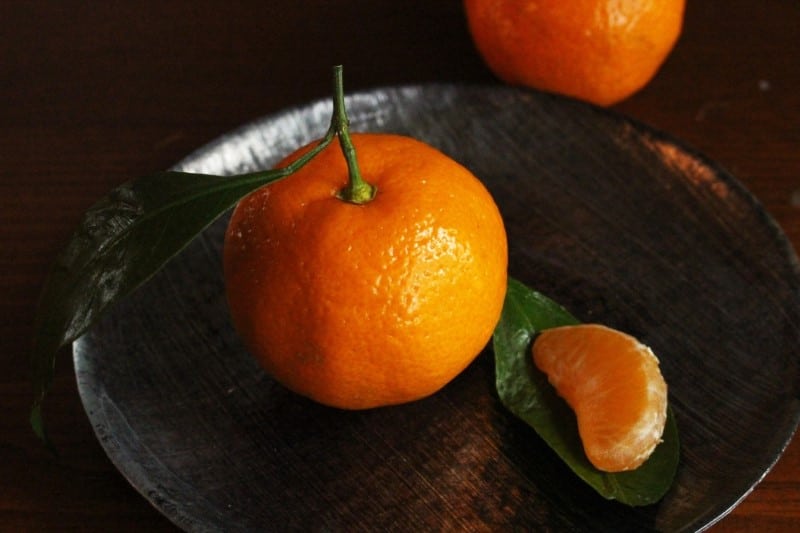
The scientific name of the Satsuma fruit is Citrus unshiu. It is an easy-peeling, semi-seedless citrus species of the more prominent Rutaceae family. This fruit is also called satsuma orange, satsuma mandarin, tangerine, naartjie, and Miyagawa mandarin. Its origin is China and is now widely grown in Japan. Out of all the types of citrus out there today, this is one of the sweeter types, making it perfect for those who don’t like the traditionally sour flavor of citrus. It is consumed alone while raw and it is very juicy and tasty. They can also be used to make juices. They give your body a boost of Vitamin C, which supports your immune system and reduces tiredness and fatigue.
Seagrape

The name seagrape, adapted from its coastal home, makes perfect sense when you see these clustered, red, grape-like fruits. Like grapes, they are edible, and you can eat them straight from your hand or use them to make jelly and jam. Their taste is often compared to that of muscardine grapes, but they have slight saltiness, acidity, and sweet notes. They are said to taste like the sea. You can eat them when fresh after washing thoroughly to remove the mild fishy smell of the seaweed. When taken with spices such as vinegar, miso, and soy sauce, they act as a healthy snack for the body. They contain nutrients that help prevent constipation, strengthen bones and joints and avoid obesity.
Seville Orange

The scientific name of the Seville Orange fruit is Citrus aurantium. This fruit is also called Bitter orange, marmalade orange, or bigarade orange. It belongs to the more prominent Rutaceae family. Some think the Seville orange is a mix of pomelo and Mandarin orange. They’re used popularly to make marmalade. If it’s raw, the pulp is not suitable for human consumption. The fruit is medium-large in size, round in shape with a depressed apex. It has a pebbled dark orange crust. They mature in winter and are bitter, seedy, and acidic. Because of their taste, they are not pleasant to eat while raw and alone. They are suitable for cooking, and they feature in several famous cuisines around the world.
Shonan Gold
The scientific name of the Shonan Gold fruit is Citrus flaviculpus. Shonan gold might be the perfect name for this Japanese citrus fruit. It has a bright golden yellow color that makes it easy to spot. The fruit is not entirely seedless, but it has few seeds. It resembles a lemon, but it has a fresh smell and a refreshing sweetness. It is a tiny fruit but offers immense satisfaction when consumed. It is used in making candies and drinks, wine, craft beer, gummies, and jellies.
Snap Pea
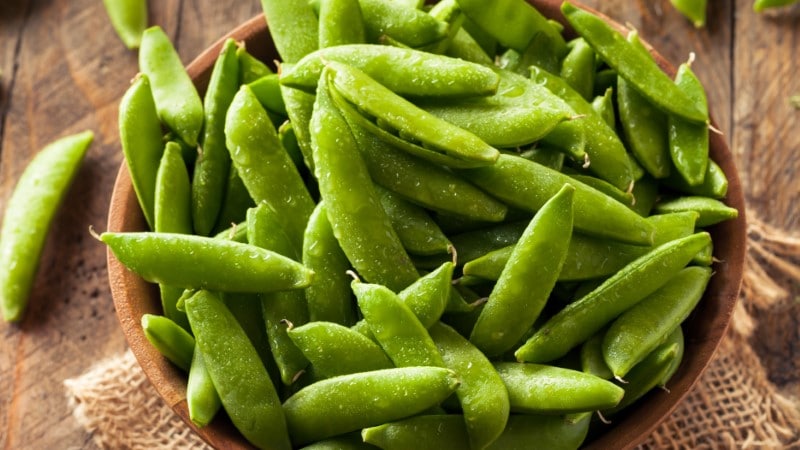
The scientific name of snap pea is Pisum sativum’ Macrocarpon Group’. Snap pea’s scientific name and that of snow pea are quite similar and are thereby subjected to confusion between the two. Snap pea is a variety of pod pea with thick walls. This is the most common variety of pea pods. Its pods have a round shape. They are small green pods that are edible. You can eat this as a whole or use it in salads. It is also called butter pea. Inside the pods, it has about eight peas in it.
Snow Pea
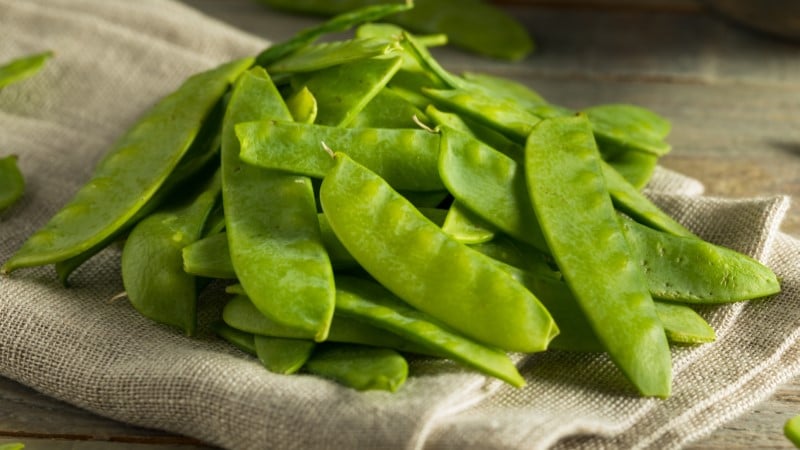
The scientific name of snow pea is Pisum sativum var. Saccharum. The scientific name of a snow pea is often confused with that of a snap pea. They, however, do not look similar. It is a type of pea. The pods and seeds are edible. At the same time, its stems and leaves are sometimes cooked. The snow pea is mostly mixed in stir-fries.
It is also known as Chinese pea and mangetout. A snow pea thin pod walls with quite flat pods. The pods have a non-leathery texture. Both the pod and its seeds are eaten. A key to remember is that the pods are eaten before they ripen.
Soncoya
The scientific name of the Soncoya fruit is Annona Purpurea. It belongs to the Annonaceae larger family. It originates from Central America and is now commonly found on the coastal sides of Southern Mexico Panama, Colombia and Venezuela. It is also found in the Philippines and a few Asian regions. The spiny soncoya fruit looks quite intimidating, especially when it’s ripe. Cut it open, though, and discover it tastes like soursop. It is a tropical fruit that needs warm and wet climates to thrive well. They ripen towards late summer or early fall. Its skin is quite hard but not frosty hard.
Sour Cherry
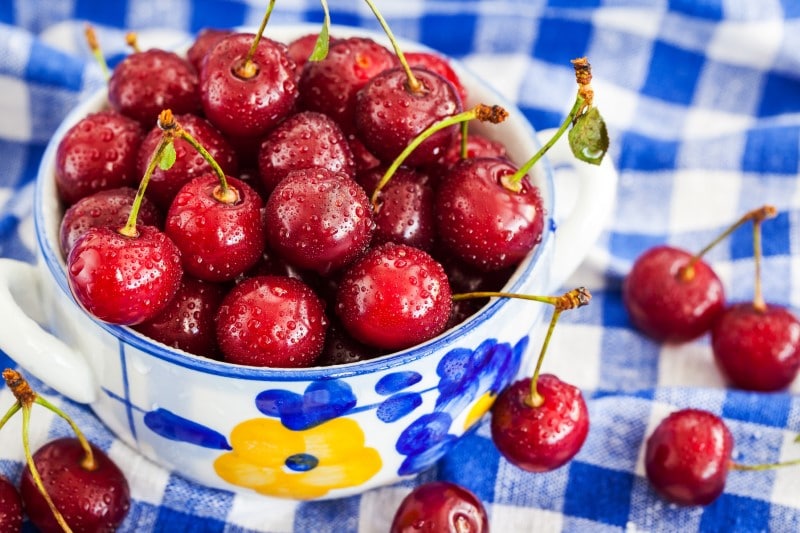
The scientific name of the Sour Cherry fruit is Prunus cerasus. It originates from Europe and Southwest Asia. It is part of the Rosaceae family. It is closely related to the sweet Cherry, but it’s more acidic as a fruit. You might have guessed from its name that sour cherries have a lip-puckering sour taste. Today, Turkey is the world’s largest producer of sour cherries. They are loaded with essential nutrients such as antioxidants, Vitamin C, and Phytochemicals which are disease-fighting plant compounds. This tiny red fruit helps to: enhance heart health, reduce inflammation, prevention of cancer and other health benefits. They are best consumed when cooked. They come into full flavor after they have been heated.
Splendor Apple
The scientific name of the Splendor Apple is Malus domestica. In New Zealand, its origin, the splendor apple, is well-loved for its dessert-like taste. If you get your hands on one, enjoy it raw because it’s a crispy and sweet apple that makes an excellent snack. Splendor apples are medium-large in size. They are conical in shape with faint ribbing. When young, the fruit is green. It turns to a yellow base with bright red and dull red blushing when ripe. There are many light green pores covering the crust. Its flesh is a medium fine-grained pale yellow to light green color and is crunchy and firm. Splendor Apple fruits are succulent and sweet with little acidity. They are in season in the late fall. They are mostly eaten raw while fresh. They contain Vitamins C, K and B6, polyphenols, and minerals like manganese, magnesium, copper, and potassium that are essential for a healthy body.
Squash Blossoms
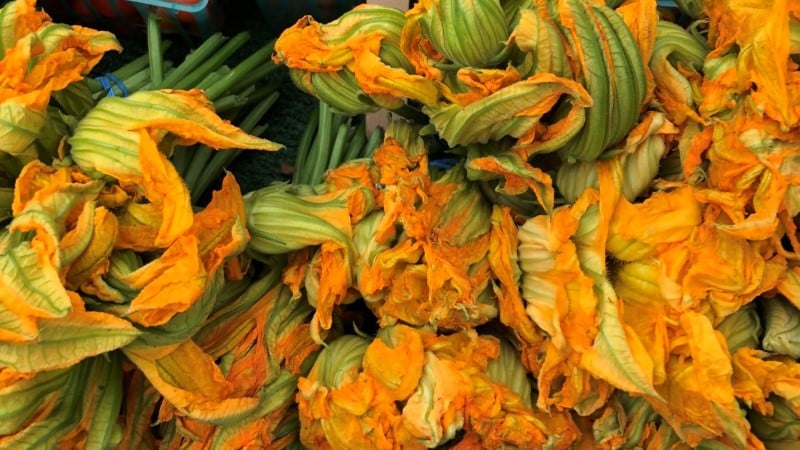
The scientific name of squash blooms is Cucurbita moschata. This is also known as courgette flowers. This comprises edible flowers coming from Cucurbita species. You can enjoy squash blossoms raw or fry them to your liking.
Squash blossoms are not easy to get in supermarkets because they are highly perishable. The squash blossoms can be eaten raw, fried, battered, or stuffed. Consumption of squash blossoms has potential health benefits for individuals, such as performing anti-cancer activities, anti-diabetic activities, and anti-bacterial activities.
Summer Squash

The scientific name of summer squash is Cucurbita pepo subsp. Pepo. The vegetable has a greenish-yellow color. Summer squash has several varieties, such as cousa squash and zucchini. This is usually harvested when it is still immature and tender, and edible. That is when the rind is edible.
Summer squash is a rich source of nutrients such as fat, proteins, carbohydrates, fiber, vitamin A, C, calcium, and iron. Eating summer squash can assist one with some health benefits, such as performing pro-apoptotic activities on tumor cells, anti-proliferative activities, and anti-oxidant activities.
Star Apple

The scientific name of the star apple is Chrysophyllum cainito. It is a tropical tree of the Sapotaceae family. Its origin is the Isthmus of Panama, where it was domesticated. It has spread to the West Indies and the Greater Antilles and is grown in the tropics and Southeast Asia. If you dipped an apple in ink, you might end up with something that looks like the star apple. Its dark appearance is likely where its nickname, the tar apple, came from. In some Central American regions, the star apple is sliced and served chilled. It has a white, jelly-like pulp that is sweet and very juicy. It is mainly eaten when fresh. It has fiber which helps improve digestive health and keep sugar levels under control, Vitamin C and antioxidants that keep the body’s immune in check.
Star Fruit

The scientific name of the star fruit is Averrhoa carambola. It is a species that originates from tropical Southeast Asia. When you cut the start fruit open, its steep ridges give it the appearance of a star shape. It’s safe to eat the fruit raw or you can use it to make a relish. It has a mild sweet-sour taste, somewhat like a mix of ripe pear, orange and green pie. The flesh of the fruit is firm and juicy, similar to that of a grape. The entire fruit is edible, including its skin, making it easy to eat when raw. It is yellow or green in color and it appears in two major types: a smaller and sour type and a larger and sweeter one. Its sour flavor makes it popular with a number of dishes. It is a source of several nutrients, especially Vitamin C and fiber, which keeps the body healthy and boosts its immune system.
Strawberry
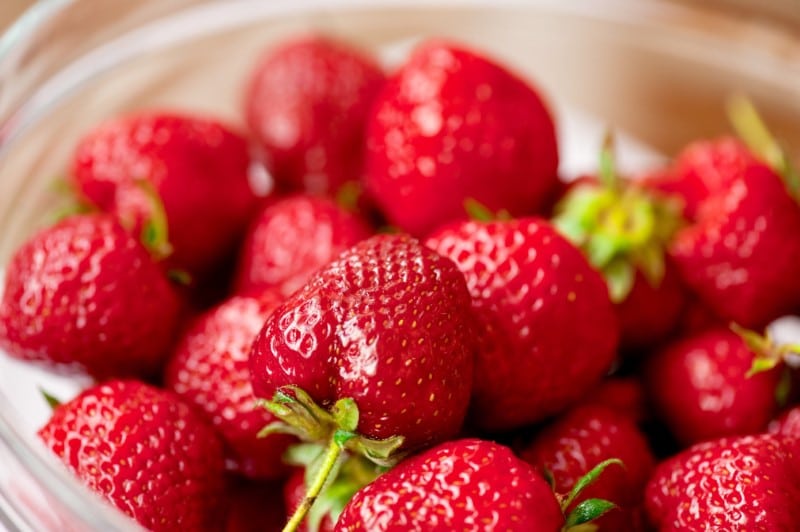
The scientific name of a strawberry is Fragaria ananassa. Strawberries are a common fruit that many people have probably encountered. It is available worldwide being an edible, popular fruit. They are succulent with a sweet flavor. They can be eaten alone while raw or used in making smoothies, juices, jams or delicious sauces. They have high nutritional values that protect your heart, lower your blood pressure, guard against cancer and increase the good cholesterol in your body. They contain fiber, antioxidants and many other nutrients.
Strawberry Guava

The scientific name of the Strawberry Guava is Psidium cattleyanum. It is also commonly referred to as cattley guava or Cherry guava and it belongs to the Myrtaceae family. The strawberry Guava is an edible fruit that can be eaten whole and raw and is safe for consumption. It has a sweet and juicy pulp. The leaves of the tree used to produce the Strawberry Guava fruit can be used to make tea said to be nutritious for the body. The Strawberry Guava fruit has many antioxidants and Vitamins that have essential health benefits for your body.
Salal
The Salal fruit appears to be slightly identical to blueberries when ripe. They are found along the Pacific Coast of California. They are ripe during summer, and it is one of the ordinary and most overlooked berries. Their taste varies from sweet to bland and boring depending on the soil and sun conditions they are grown. The leaves of the tree that produces this fruit are said to make tea that has nutritional benefits for the body. It can treat indigestion, ulcers, fevers, and heartburns. They can be eaten when raw and fresh or added to pies, jam, smoothies, fruit leather, and any other creative recipes you can come up with. When harvesting, it is better to cut them off in bunches and sort them at home instead of waiting for them to fall off on their own. Research reveals that they have high oxidant levels, which have cancer-fighting properties and help with heart health.
Saigon Mango
The Saigon mango fruit, whose scientific name is Mangifera Indica, is native to the Asian region, particularly Vietnam. It was developed and introduced to the United States over a century ago and is one of the most consumed fruits in the world. It has a mildly sweet and juicy taste that makes it a perfect light snack and is used in the dessert with sticky slicing and rice. Its juice makes for an outstanding drink that is canned mostly for export. The fruit is large with an oval shape that has a pointed apex. It has green skin when young, which turns to yellow with some light pink blush at times when ripe. The flesh is yellow, fiberless with a sweet aroma, and it oozes fresh juice. It has high sugar content and a thin seed. These mangoes are usually ready to be consumed even when green. They can also be left to ripen at room temperature storage. They can also be used to make healthy juices and smoothies for consumption.
The Saigon Mango fruit has protective antioxidants, Vitamin B and C that can help fight diseases such as diabetes, heart diseases, and blood pressure and help with digestion.
Stinking Bishop Pear
The Stinking Bishop pear is named after a Fredrick Bishop, who was a farmer in the 1800s. He is believed to be the original grower of this fruit. Because of his riotous behavior, he earned the name ‘stinking bishop.’ That is how the fruit got its name as opposed to thoughts and speculations that it received its name from its odor. It is grown near Dymock in Gloucestershire in England. The Stinking Bishop Pear is a medium-sized pear of a rounded-conical shape. It has a green skin when young that turns to a bright yellow with some resetting when ripe. It is used to make juice whose acidity and tannin is medium with little or no citric acid present. It is also used for making Perry with suitable alcoholic strength and taste.
The Final Letter
Discussed above is a lengthy list of some of the fruits that start with the letter S. Some of these fruits are the usual ones that you come across every other day, others are completely new to you. The important thing is that now you can get a chance to learn about them and to add new ingredients to your diet. Incorporating fruits in your diet should be a lifestyle for you in order to maintain a healthy body. Investing in your vitamins and taking them faithfully will certainly reward you abundantly, so make the right investment for the sake of your health.
